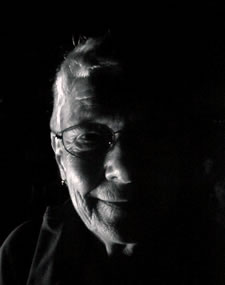 |
Dharma Gleaningsbycynthia rich
|

|
April 19, 2014—May 20, 2014
April 19, 2014
I’ve written a great deal—too much? too repetitively?—about the difference between empathy and true compassion, still I’ve found some new words.
As I’ve said before, empathy says: “I am hurting right now the way I imagine you are hurting. I feel (what I imagine is) your pain.”
When I listen to compassion, this is what I hear: “My heart is opening to what you are telling me or showing me of your pain, and the suffering I see manifested in you is deepening my awareness of my connection to the world’s suffering,”
I am not feeling the pain or suffering—I am experiencing it.
May 1, 2014
I can understand why there seems to be a bias in western Buddhism against therapy. While therapy can be truly transformative in helping us remove defilements, so much psychology/psychiatry simply tries to make us more comfortable with living in what Adyashanti calls “consensus reality.” In the 1950s, the goal of therapy was seen to be producing the “well-adjusted” person.
However, it is not so different with Buddhism—we can use it to transform or we can settle for letting its insights and techniques make ordinary life a little easier. When we read Rick Hanson and others, who are trying to make Buddhism more accessible by showing its usefulness in our mainstream lives, we really can’t afford to be snobbish towards therapy, can we?
I’m not being critical of either mainstream therapists or Rick Hanson—there are situations in which the “adjustment” approach is skillful and necessary to take someone to the next step. Using old rags to stanch a wound may be entirely appropriate when no sterile bandages are available. I’m just suggesting that we not criticize someone else’s rags when we are using our own.
LATER
Andrew Olendzki deliciously zaps the mainstreaming of Buddhism when he writes: “There is considerable enthusiasm for mindfulness these days as long as it does not threaten to make us wise.” (“The Mindfulness Wedge,” Tricycle)
May 2, 2014
I think of dying as if it were the Boston Marathon and I am training for it. Not training to impress anybody, just to get to the finish line with dignity. The same things I’m doing today are the things I’ll need then—meanwhile, I’ll be healthier and stronger for this training.
I used to see the Tibetan preoccupation with how we die as a bit misguided, degrading the importance of our life in the present by hyperfocusing on the future, its ending. Now I understand that when we take in the reality and the challenges of our dying, we can gauge more clearly where we are on our path at this moment—by seeing our life now through the lens of death, we can focus with more discernment on the present.
May 6, 2014
It can be disheartening to hear smart practitioners speak about enlightenment as if they were talking about Katmandu and they don’t have any money to travel. The stance is rather like: “I’m so humble...poor little me...it would be so wonderful to get there, but of course...in my lifetime?...little me?” I experience that humility as a cop-out, an unwillingness to acknowledge that what stands between them and their already existing enlightenment is a less than wholehearted commitment to the tough housekeeping work of cleaning the windows over and over again.
Enlightenment means cleaning the windows over and over not so that we can go somewhere else, rather so that the light can shine on what is already right here.
May 20, 2014
These thoughts are an expansion of Mannie’s comparison (October 9, 2013) of our attachment to memory with hoarding:
For most of us, thinking is the same addiction as hoarding. When we hoard, a few of our possessions are useful and appropriate, even necessary. When we think, a few of our thoughts are useful and appropriate, even necessary. However, both the hoarder and the thinker feel safer as they add to their storehouse or look over its myriad contents. The more the better, they both feel.
Like the hoarder, the thinker believes—however unconsciously—that even a thought that is obviously not useful—a vague imagining or a random memory—will maybe turn out to be something she can make something with or will somehow be useful someday. Better to have the apparently useless thoughts—or the embroidered hankies or the chipped bowls or the three file boxes—than pass them by, because after all you never know.
Like hoarding, thinking protects us from our fear of emptiness, of non-self. Both assure us that we are supplied, that we have more than enough, because enough is never enough.
According to the Buddha, a person of great discernment is one who “thinks any thought he wants to think, and doesn’t think any thought he doesn’t want to think...he has attained mastery of the mind with regard to the pathways of thought.”
To the hoarder it is not conceivable that fewer things could lead to greater peace, and to the thinker it is not conceivable that fewer thoughts could lead to greater discernment.
LATER
Thinking is also an ego strategy that can permit us not to feel.